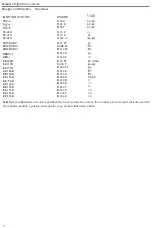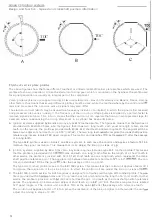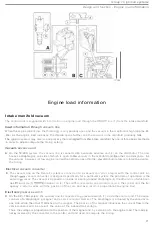
Group
28
Ignition
systems
De
sign and function
General
A
B
c
late ignition
C.
Late ign
it
ion
reduces
engine power since
the
pis
t
on is
t
ravelling downwards
from
ToC
when the
pr
essure
r
ise oc-
curs.
As
a
result
,
the
engine does not u
t
i
lize
t
he full
energy
content of the
fuel
.
Although
the
concentra
tions
of
unde
-
s
ira
ble constituents such as
HC,
CO,
NO
and
are lower under
these
conditions,
the
engi
n
e
require
s
more fuel t
o
deliver the
same
producing a greater
tota
l
volume of exhaust
gases.
Effects on
cylinder and exhaust
gas temperatures
Advancing the
ignition (i.e. generating
the
spark
to
ign
ite the fuel
/air
mixture
when
the pis
ton
is further from
ToC
)
produ
ces
a
h
igher combustion
temperature
and a
low
er
exhaust gas
temperature than when the
tim
ing
is
r
e
t
a
rd
ed.
Thi
s is due
to the
fact
that
the compression produced
by
upward movement of
the
pis
t
on
reinforces
the
pressure
w
ave
developed
by
t
he
flame
front, causing
the
cylinder pressure and
temperature to increase. The
lower
ex
hau
st
gas temperature
is explained
by the
somewhat longer
in
terval between
the completion of
combustion
an
d th
e open-
i
ng
of
the
exhaust valve.
R
e
tard
ing
the
igni
t
ion
(gene
rating
t
he spark when
the piston is
to
TD
C)
produces a
l
o
wer
comb
u
s
ti
o
n t
em
per
-
a
ture
,
bu
t
a
higher exhaus
t
gas
temperature than when the timing
is advanced. Under
t
hese condi
t
io
ns
, a h
i
g
her
pro-
portion of
t
he energy is released
during the
expansion stro
k
e (when
the piston is
moving
r
educin
g the
maximum temperature
somewhat. The higher exhaus
t
gas
t
emperature is explained by
the
s
h
o
rt
e
r
in
t
erval
between
the
comple
ti
o
n
of combustion and
t
he opening of
the
exhaus
t
valve.
-NOTE
;
It
is
important
that the
foll
o
wing terms be
c
learly
u
nderstood
in
o
rder
to avoid
con
fusion
:
a)
Advan
cing
the
ignition timing means
t
hat
the
igni
tion
pulse
is
delivered
when
the piston is at a point funher from
TOC.
b) Retarding
the
ignition
means that the
ignition
pulse is delivered
when
the piston
is
at a
point
closer to
TOC
.
•
Under normal
conditions,
the aim
to develop
'peak'
pressure in the cylinder about 10
"
after TOC. Under idling conditions,
the
timing
is advanced
(
t
o
approx. 10-15
"
before TOC) to ensure smooth
runn
ing
.
•
The
foregoing
discussion of how the emissions are affected by
th
e igni
tion
timing
is
somewhat simplified, since there are
natural·
Iy many other
factors wh
ich influence
th
e
composition of
the
e
xhaust
gases.
10













































